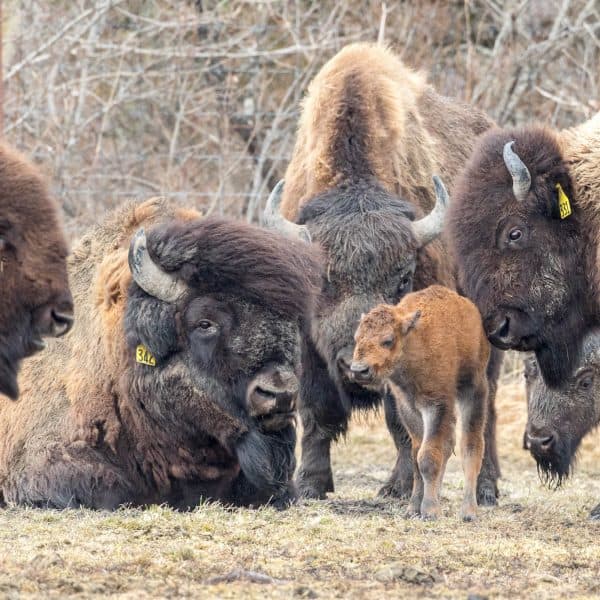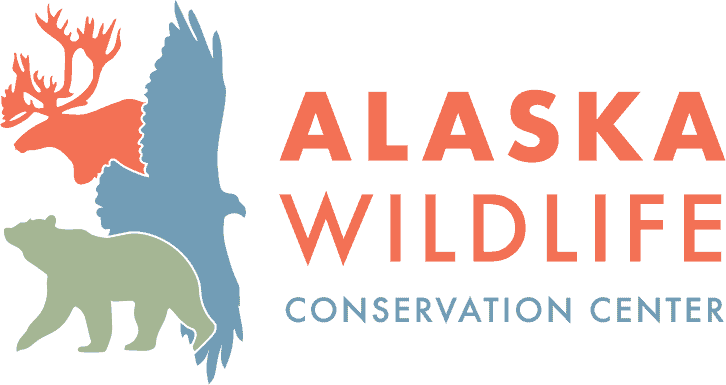Meet the Wood Bison
The wood bison is the northern cousin of the plains bison that roams in the lower 48. Wood bison are the largest land animal in the entire Western Hemisphere!

Bison are grazers and feed primarily on grasses, sedges and forbs.
Wood bison are the largest land animal in the entire Western Hemisphere! A large, mature bull wood bison will often weigh 2,250 pounds versus the 1,900 pounds of the smaller plains bison. A mature cow wood bison will weigh in at about 1,000 pounds. Calves are born from May to July, are a reddish color for a few weeks, and weigh in at 40 pounds at birth. They begin to grow horns and develop a “hump” at about two months.
In, 2015, the Alaska Department of Fish and Game released a total of 130 wood bison along the Innoko River near the community of Shageluk. The Alaska Wildlife Conservation Center partnered with ADF&G and assisted with the holding, quarantine and breeding facility for the wood bison to be released. To learn more about the reintroduction, check out our Wood Bison Reintroduction page for more details.
